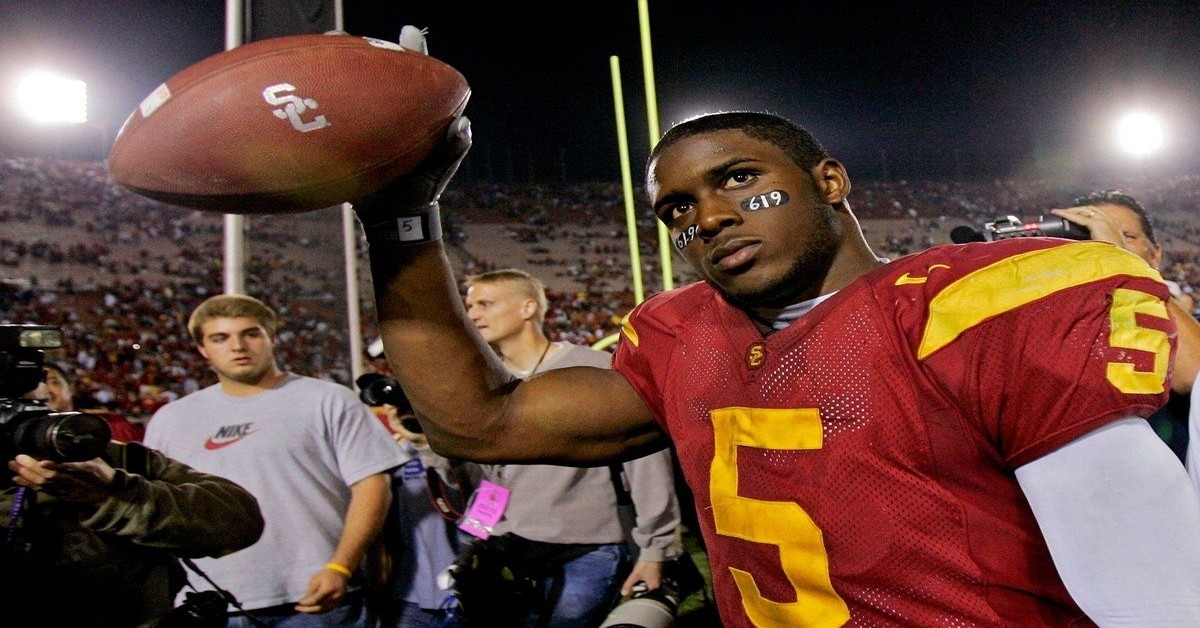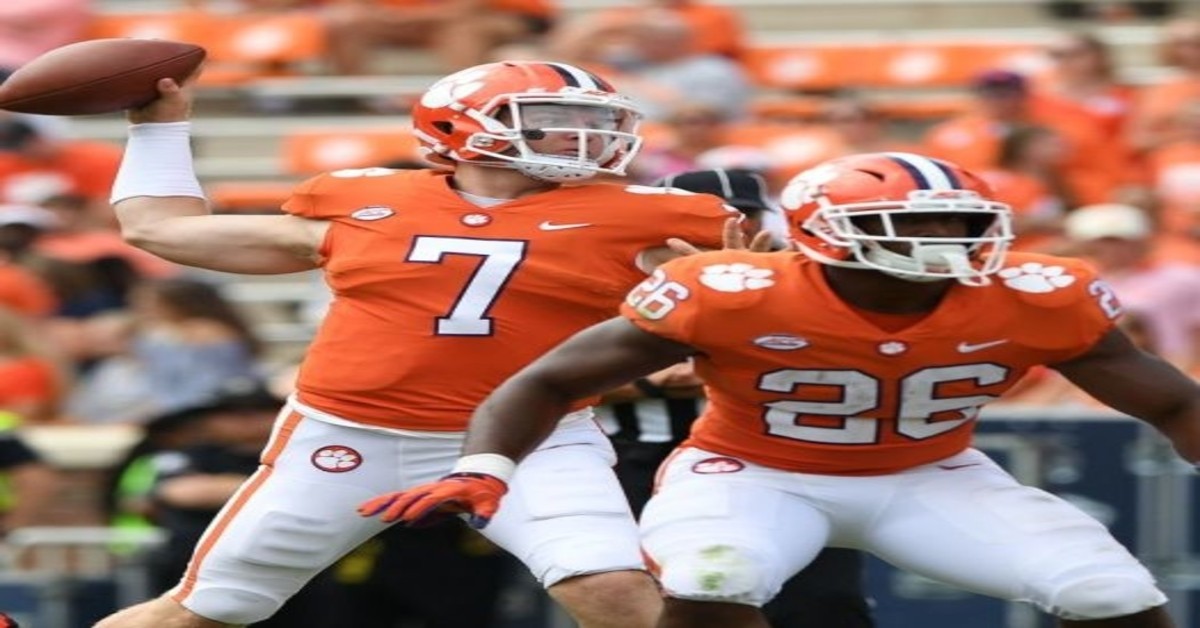Welcome to another edition of ‘Outside the Hashes,’ where we pay homage not only to the OG’s but to the new school as well, a theme in this week’s column.
I hope everyone has enjoyed the NFL and college football playoffs thus far. The latter recently concluded as LSU capped off a magical season by winning its first National Championship since 2007.
Now, during the halftime of the Championship game, they announced the top 11 greatest college football players of all time which was voted on by a panel consisting of media members, former and current coaches as well as players.
With all due respect, the list was rather dated. Not a single player in the top 11 played during the 1990s or later, which left a lot of friends of mine disappointed that childhood idols like Reggie Bush or Tim Tebow didn’t crack the list.
If you are a college football fan born anytime after the mid-80s, you didn’t see any of those top 11 players live. I thought that was a problem, which inspired me to write this week’s column.
Don’t Forget About the New School
I constructed my own top 11 list but with players who played in the 1990s or later for the younger college football fans out there. Yes, I had to make some tough decisions and leave some greats out but I believe this list will serve as a fun alternative to the top 11 list that College Football came up with. Enjoy!
11. Tyrann Mathieu – Defensive Back, LSU 2010-2011
Tyrann Mathieu earned the nickname ‘Honey Badger’ because the defensive back played fearlessly and didn’t care who lined up in front of him. He made plays that young defensive backs dreamed of making and inspired teammates of mine and kids in the area to dye their blonde on the top of their head.
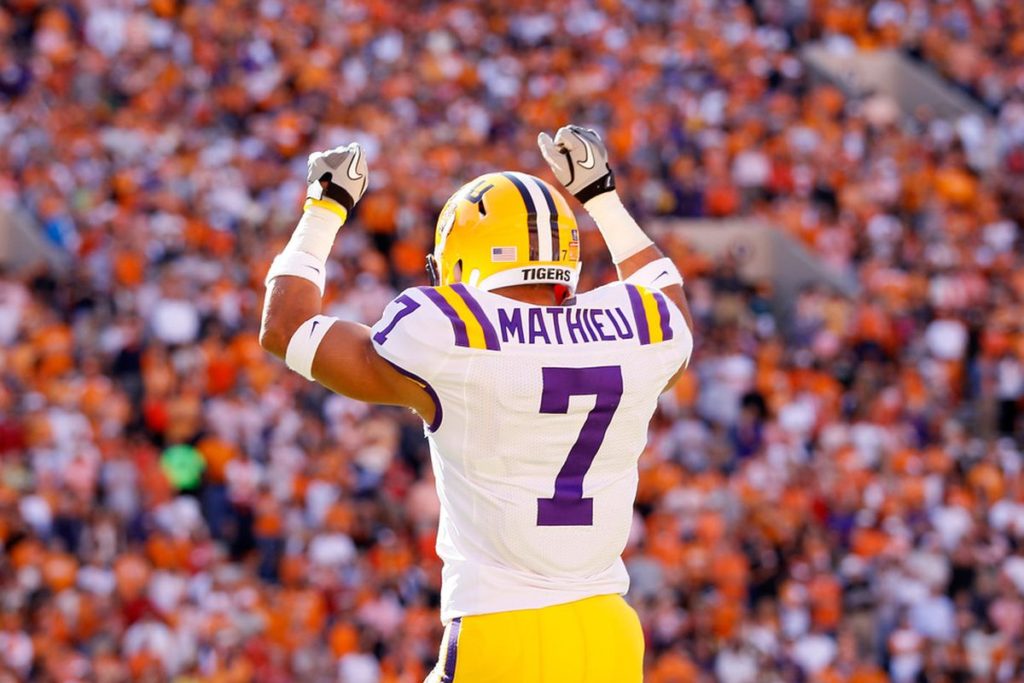
In two years with the Tigers, he totaled 133 tackles, 16 tackles for loss, 11 forced fumbles, eight fumble recoveries, six sacks, four interceptions and two defensive touchdowns. He would line up in the slot, at safety, blitz up the middle, shadow the best offensive player on opposing teams and even served as the team’s punt returner taking two returns back for touchdowns.
Mathieu’s play in 2011 earned him a trip to the Heisman award ceremony as the defensive back finished 5th in the voting. He eventually was dismissed from the LSU program before the 2012 season for failing a drug test but even with only two seasons under his belt, his elite playmaking ability earns him a spot at 11.
10. Michael Vick – Quarterback, Virginia Tech 1999-2000
After redshirting his first year, Michael Vick burst onto the scene for the Hokies in 1999. His arm strength and his elusiveness in the open-field were unlike anything the Big East conference had seen, earning him the Offensive Player of the year award in 1999.
He led the Hokies to their first-ever undefeated regular season in program history and led them to the championship game against Florida State. Vick led the nation in passing efficiency and finished third in the Heisman voting as a redshirt freshman.
Vick finished his career with 38 total touchdowns, 3,299 passing yards, 1,299 rushing yards and tons of highlight-reel plays in two seasons at Virginia Tech. He went on to be the first overall pick in the 2000 NFL Draft.
9. Ed Reed – Safety, Miami 1998-2001
Few safeties were as talented as Ed Reed when it came time to make a play on the ball. In four seasons with the Hurricanes, he recorded 21 total interceptions which ranks fourth-best all-time in the NCAA.
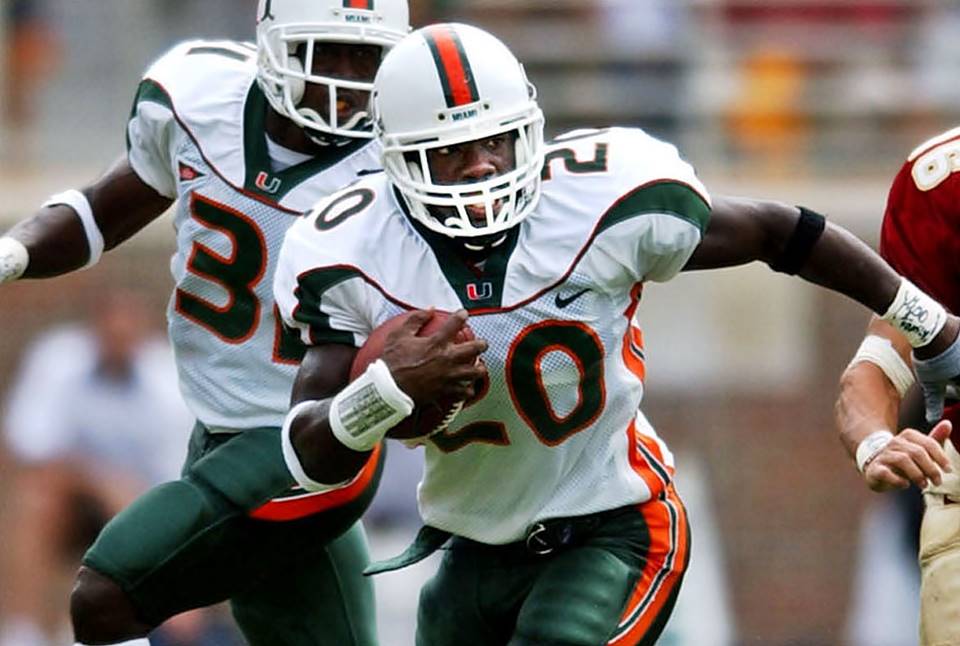
Not only did he make interceptions, but he knew how to find the end zone when he had the ball in his hands. His four career pick-sixes rank sixth all-time and he finished his career with 389 interception return yards.
He was a Consensus All-American in 2000 and 2001 and was named the Big East Defensive Player of the Year his senior season.
Reed helped turn the Miami program around, as they suffered a losing season in ‘97 before Reed’s arrival but went on to win the National Championship during his senior year. He became one of the few defensive icons to ever wear a Hurricanes uniform and was recently inducted into the NFL Hall of Fame.
8. Christian McCaffrey – Running Back, Stanford 2014-2016
Before Christian McCaffrey was making highlights in the NFL, he was doing the unthinkable as a member of the Stanford offense. While he was labeled a running back, don’t let the label fool you.
McCaffrey served as the team’s number one passing option, the kick and punt returner to go along with taking the majority of handoffs each game. In his sophomore season, McCaffrey broke Barry Sanders’ NCAA single-season all-purpose yards record with 3,864 total yards.
He went on to finish 2nd in the Heisman voting in 2015 and was named the AP Player of the Year. McCaffrey finished his career with 6,987 all-purpose yards and scored a touchdown five different ways in his collegiate career.
7. Cam Newton – Quarterback, Auburn 2010
There arguably hasn’t been a greater one-year starter in College Football history than Cam Newton. Newton spent his first two seasons at the University of Florida behind the great Tim Tebow but decided to transfer to a junior college after not getting the playing time he sought after.

Newton helped Blinn College win a JUCO National Title in 2009 and committed to Auburn University for the 2010 season. What happened next was legendary as Newton led the Tigers to a perfect 14-0 season, won the Heisman Trophy and led the Tigers to their second-ever National Championship.
The legend of Newton grew after leading the Tigers to a 28-27 Iron Bowl victory after trailing 24-0 midway through the second quarter. The 6’5” 250-pound quarterback had the elusiveness and power to get past any defender on the ground but also had the arm strength to frighten any team’s secondary.
Newton left after one magical season and was drafted number one overall in the 2011 NFL Draft. Auburn went 11-14 the next two seasons – which shows you the type of talent he was working with.
6. Joe Burrow – Quarterback, LSU 2018-2019
A little too soon is what some of y’all might be thinking, but Joe Burrow absolutely deserves to be on this list. Burrow started out at Ohio State under Urban Meyer, where he spent three years of his career.
After being unable to win the Buckeyes’ starting job, Burrow elected to transfer to LSU with two years of eligibility remaining. The Tigers were entering a new dynasty under head coach Ed Orgeron but were lacking the play-making quarterback that could take the team to the next level.
In 2018, we saw flashes of that from Burrow as he finished with 2,894 passing yards and 16 touchdowns. However, no one could have predicted what Burrow was going to do his senior year.
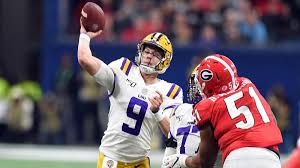
Burrow became “Mr. Joe Cool” when in the pocket and led the Tigers to a perfect 15-0 record and a National Championship victory. He ran away with the Heisman Trophy as well as six other awards for his dominant 5,671 passing yard and 65 total touchdown season.
His 60 passing touchdowns (with only 6 interceptions), 65 total touchdowns, his completion percentage of 76.3%, his passer efficiency rating of 202, his 9.4 average yards per play and 6,040 total yards are all single-season NCAA records.
5. Ron Dayne – Running Back, Wisconsin 1996-1999
Back when running the ball was heavily featured in every college team’s offense, a running back by the name of Ron Dayne from Wisconsin was setting the example of what a talented back could do for a program.
Before 1996, Wisconsin had appeared in four different Rose Bowls but had only one victory (1993). That changed when then-head coach Barry Alvarez took a chance on the 270-pound back from Overbrook High School.
Dayne came in and immediately brought the Badgers rushing attack to new heights rushing for 2,109 yards and 21 touchdowns as a true freshman. He followed that up with 1,457 yards and 15 touchdowns in his sophomore year.
After back to back 8-5 seasons, Dayne and the Badgers were ready to take that next leap in ‘98 as the tailback ran for 1,525 yards, 15 touchdowns and led Wisconsin to an 11-1 season that resulted in a Rose Bowl victory.
As a senior, Dayne rushed for 2,034 yards, won the 1999 Heisman Trophy award and set an NCAA record for most rushing yards over a career (7,125) while leading the Badgers to yet another Rose Bowl victory. Since Dayne’s departure, the Badgers have yet to win another Rose Bowl game.
4. Peyton Manning – Quarterback, Tennessee 1994-1997
As the son of former Ole Miss great Archie Manning, Peyton Manning had pressure on him to perform right away for the Volunteers. What stood out was his knowledge and commitment to the sport of football which made him a very lovable sports figure.
Manning did not play a whole lot his freshman year but opened up his sophomore season as Tennessee’s starting quarterback. He finished the year with 2,954 passing yards, 22 touchdowns and only four interceptions on the way to an 11-1 overall record.
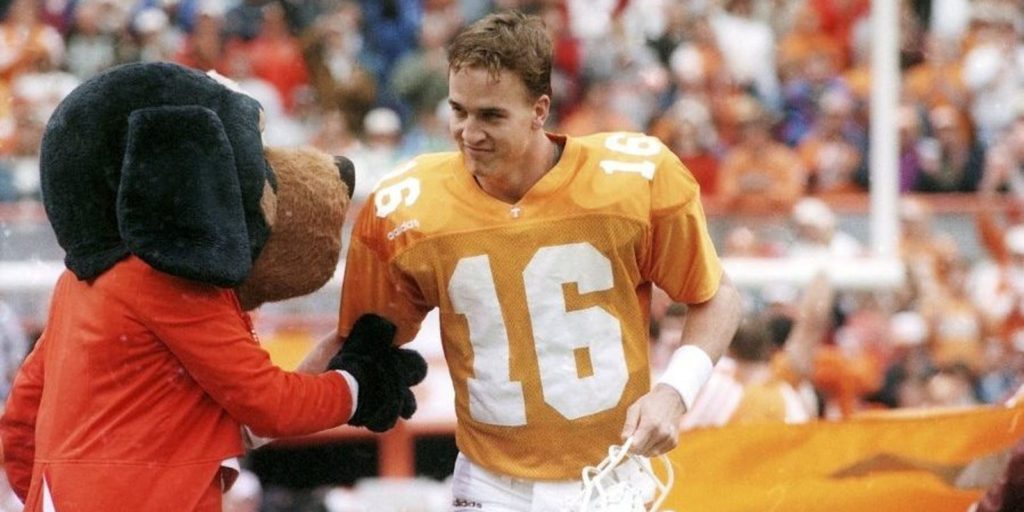
The numbers his junior year weren’t as prolific, but Manning had the Volunteers atop the college football world again with 3,287 passing yards, 20 touchdowns and a 10-2 overall record. Manning’s senior season was by far his best as the quarterback threw for 3,819 passing yards, 36 touchdowns and led Tennessee to an 11-2 record.
That season, he was named a Consensus All-American and won the Davey O’Brien Award while being named the SEC Player of the Year. His 863 career completions and 89 career passing touchdowns both rank fourth all-time in SEC history.
3. Orlando Pace – Offensive Tackle – Ohio State 1994-1996
Really, an offensive linemen? Not just any offensive linemen, perhaps one of the greatest lineman to ever play the sport goes to Orlando Pace, nicknamed the “Pancake Man” after his ability to flatten defenders repeatedly for the Buckeyes.
At 6’7” 335-pounds, Pace had the power to single-handedly create running lanes but also had terrific athleticism allowing him to become a prolific pass-blocker. He was a Consensus All-American in both 1995 and 1996 and finished fourth in the 1996 Heisman Trophy voting, tied for the highest finish ever by an offensive linemen.
He won the Outland Trophy his junior season after not allowing a sack all year and went on to become the number one overall pick in the 1997 NFL Draft.
2. Tim Tebow – Quarterback, Florida 2006-2009
You couldn’t call yourself a sports fan if you didn’t know who Tim Tebow was in the late 2000s. His play at Florida was great and his passionate speeches inspired thousands of high school athletes during that time.
Coming from Nease High School, Tebow was heavily recruited by all the big time programs but chose to play for Urban Meyer and the Gators. As a freshman, Tebow was the backup on a National Championship team and got the taste of what winning was like.
His sophomore year didn’t go as planned as the Gators went 9-4 but Tebow emerged as one of the game’s great dual threat quarterbacks. He finished with 3,286 passing yards, 895 rushing yards and 55 total touchdowns on the way to winning the Heisman Trophy.
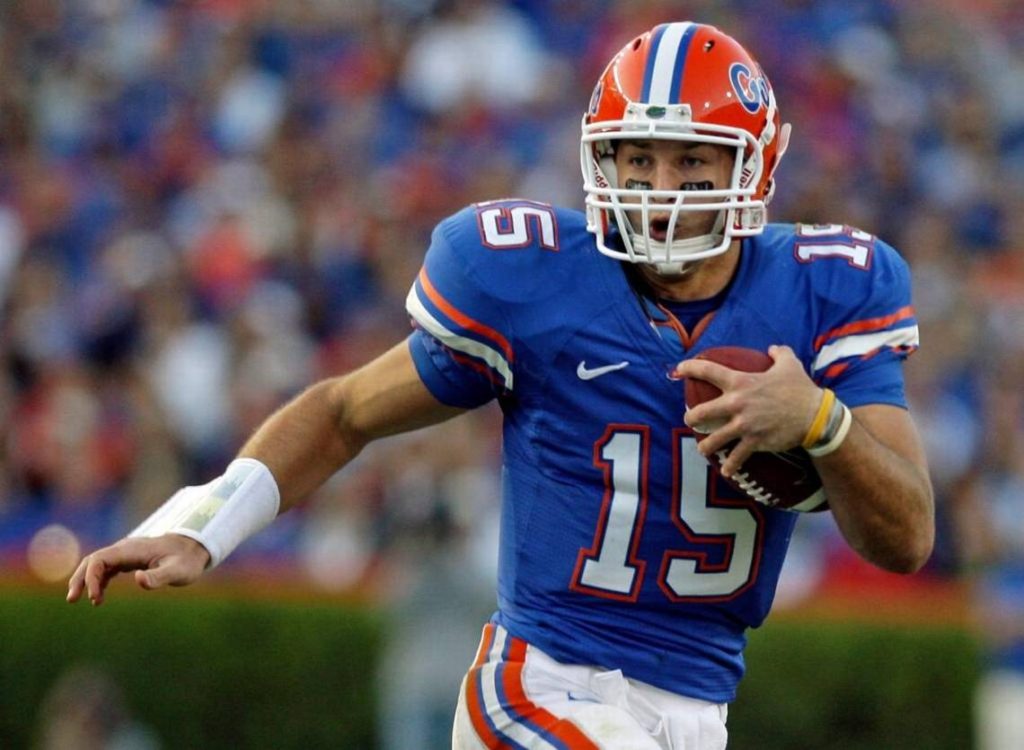
The legend of Tebow grew in 2008 after the preseason favorite Gators lost to unranked Ole Miss in September. After the game, Tebow delivered a bone-chilling speech known as the ‘Promise’ speech in which he apologized for their lackluster performance but promised that no player in the nation will work harder the remainder of the season; he did just that.
Tebow and the Gators won their next eight games on the way to winning the National Championship and fulfilling his promise. In 2009, Tebow and the Gators couldn’t defeat a powerful Alabama team in the SEC Championship but he did finish with 3,805 total yards and 35 touchdowns in a 13-1 season.
Tebow still holds the record for most career rushing touchdowns in the SEC (57) and his 145 career touchdowns responsible for is ninth most in NCAA history.
1. Reggie Bush – Running Back, USC 2003-2005
If you’re under the age of 30 and are a college football fan, there was no player more fun to watch than Reggie Bush. During those early 2000s years, USC was atop the college football landscape thanks to great talent across the board, but everyone had eyes on the tailback wearing number 5.
Bush made a name for himself as a true freshman, getting involved in the return game and averaging 27.3 yards per kick return and took one back for six. He also contributed on offense with 835 scrimmage yards and 7 touchdowns as the Trojans quickly learned how dangerous in the open field Bush was.
In his second season, Bush found himself in a bigger role and finished with 1,417 yards of offense, 13 touchdowns and two punt return touchdowns. He helped the Trojans to a 13-0 record which was capped off with a 55-19 beatdown on Oklahoma in the National Championship.
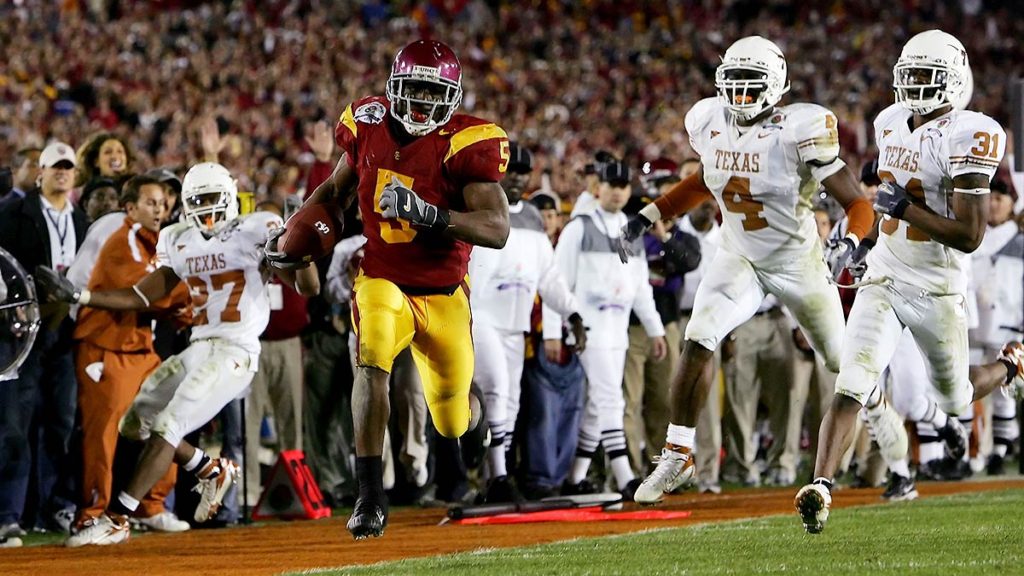
The Trojans looked like they were going to do the same in 2005 but lost in heartbreaking fashion to Texas in the National Championship. Nonetheless, Bush had his best season rushing for 1,740 yards, scored 18 offensive touchdowns and returned a punt return for a score as well.
Bush went on to win the Heisman Trophy that season and was named a Consensus All-American for the second year in a row. His legacy continued to live on through the old NCAA Football games as his speed and acceleration served as an unfair advantage to those playing with USC.
Without a doubt, I can’t think of any two players more iconic than Tebow and Bush from the New School – which is why they sit atop my list.

